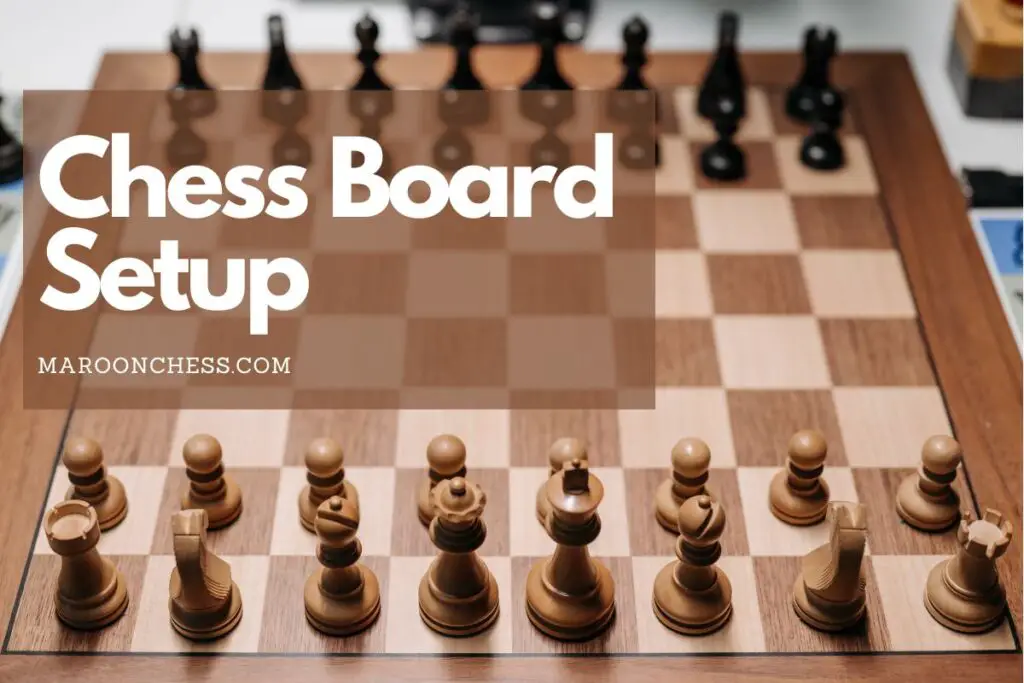If you’re starting to get into chess, the board setup can be confusing. There are so many pieces with so many positioning rules.
To set up a chessboard properly, you need to know the proper placement of the board, what all the pieces are called, and where they go.
That sounds simple enough, right? Well, yes, and no.
Yes, it’s not hard to understand and memorize a chess setup. That said, without an accurate, comprehensive guide, you’ll end up making mistakes a lot of beginners make.
After reading this article, you’ll know the ins and outs of a chess board setup.
How to Place Your Board?
The first thing you need to know before you put your pieces on the board is how to place the board on the table. Yes, there’s a right way to do that.
A chess board has 64 black and white squares. That’s why, at first glance, the square patterns might look identical no matter how you place the board.
However, when you change the orientation of the board, the patterns change as well. That means your pieces will stand on the wrong square.
So, what’s the proper orientation?
A letter and a number are assigned to every square.
If you’re playing with white, you’ll notice from left to right, we go from the letter a to the letter h.
Going up the board, we see the numbers 1 to 8. They’re called ranks if we’re being super technical.
Make sure the square a1 is in the bottom left corner of the board. If you’re playing with black, the bottom left square should be h8.
What if the board doesn’t have numbers and letters on it?
Place the board so that both players have a white square in the bottom right corner, and you’ll be good to go.

How to Place the Pieces?
That’s the part you’ve been waiting for, so let’s see how to place every piece on the board!
The Queen
The queen is the piece wearing a crown on its head and it’s the second tallest piece on the board.
We start with the queen because beginners can easily misplace it, although it’s arguably the second most important piece you have.
The queen always sits at the center of your first rank. There’s a common rule to follow when you wanna place it: the queen always matches the square of her color.
If you’re playing with black, place the queen in the middle black square. That’s d8. The white queen, on the other hand, goes in d1.
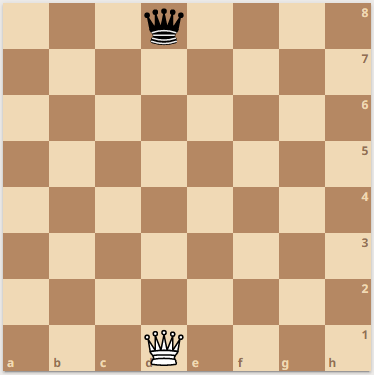
The King
If you’re playing with a traditional chess set, you’ll notice the king has a cross on its head.
The king sits comfortably beside his queen at the center of your first rank.
If the queen matches the square, the opposite goes for the king.
White kings stand on the black middle square, while black kings stand on the white square.
Now you should have the king and the queen in the middle of your first rank, with six empty squares on either side.

The Rooks
The rook is the piece that looks like the tower of a castle. You usually see castles with more than one tower, right?
That’s why you start with two rooks.
Put both rooks on the bottom corners of your first rank. If you’re playing with white, that’d be a1 and h1.
If you play with black, put them on a6 and h6.
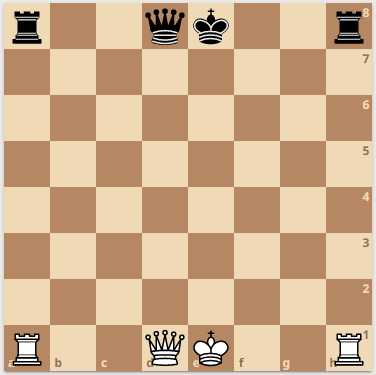
The Knight
The knight is the piece that looks like a horse. Don’t call it a horse, though. Chess players hate that.
You start with two knights.
Position them right next to your rooks. That’s a1 and g1 if you’re playing with white, and b8 and g8 if you’re playing with black.
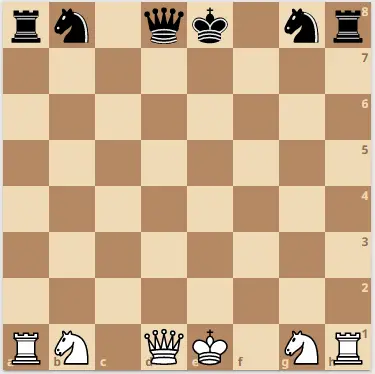
The Bishops
The bishop is the piece that looks like someone tried to cut the top of its head with a knife.
As with the knight and the rooks, you start with two bishops. Each bishop stands on either side of the king and queen.
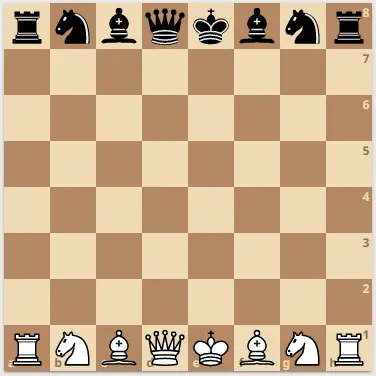
The Pawns
Pawns are the easiest pieces to place. They’re the smallest pieces you have and come with small, round heads.
You start with 8 small pawns, and you put them all on the second rank of your side.
That means pawns are the front line of your setup.
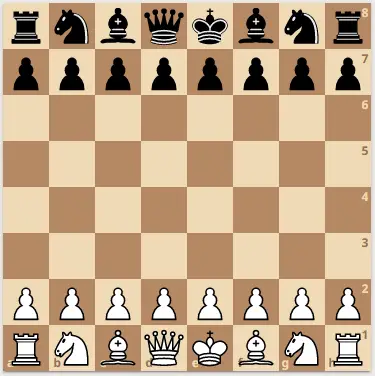
Board Setups in Different Variants
Now that we’ve covered everything about the classic chess setup, let’s cover some of the variants.
Circular Chess
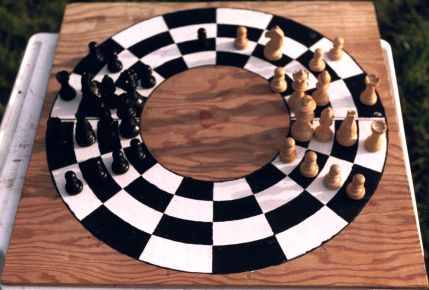
This variant differs from traditional chess, both in the setup of the board and the positioning of the pieces.
How to Place the Board
As the name suggests, you have a circular board that kinda looks like a dartboard.
The board consists of four circles, each containing 14 squares. Technically, there’s a fifth circle, but that center circle is pretty useless, so we don’t talk about it.
Because of the roundness of the board, it doesn’t matter how you place it. What matters is how you place the pieces.
Placement of the Pieces
Start by placing your king and queen at the squares closest to the center circle.
Just like regular chess, the queen stands on a matching-color square. The king stands on an opposite-color square.
Right behind the king and queen stand the bishops, followed by the knights, then the rooks.
3rd Millennium Chess

This variant takes the board setup to a whole new level.
How to Place the Board
In this variant, the board is cylindrical, so there isn’t a right or wrong way to place it.
Placement of the Pieces
Placing the pieces is the tricky part here.
When you rotate the cylinder, you’ll notice three rows with squares thinner than the rest of the board. That’s called a king line.
That’s where you place your minor and major pieces.
White pieces are placed on the king line, with two light squares on the far right side. The setup of the pieces is the same as a regular setup, except for the pawns.
Unlike regular chess, you have 16 pawns. Place pawns on either side of your king line, and you’re ready to go.
Black’s setup mirrors White’s.
Wrapping Up
To understand a chess board setup, you need to know the proper orientation of the board and where all the pieces go.
Pieces come in different numbers and stand in different positions.
The rules of traditional board setup don’t all apply to chess variants.
In both circular and 3rd-millennium chess, it doesn’t matter how you place the board. It matters how you place your pieces, though, so know the rules well.

